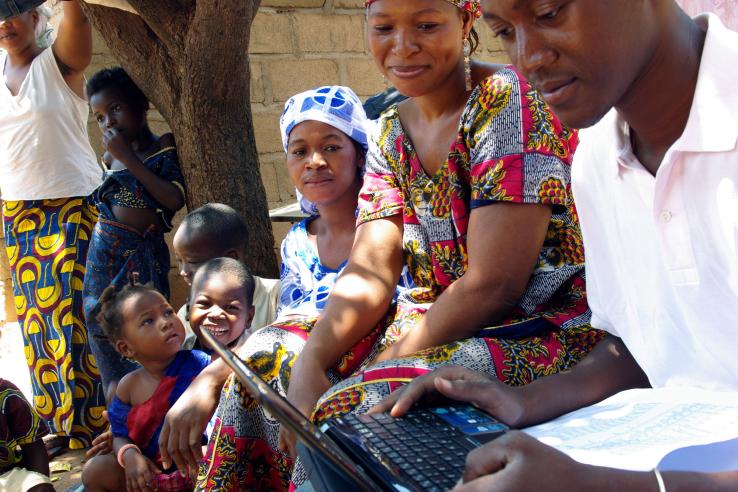The overtreatment challenge: Why are providers prescribing antimalarials to malaria-negative patients?

This blog post is based on Lopez, Carolina, Anja Sautmann, and Simone Schaner. “The Contribution of Patients and Providers to the Overuse of Prescription Drugs.” NBER Working Paper No. 25284, November 2018.
A critical challenge for developing country health systems is to craft policy that gives individuals with curable diseases like malaria and pneumonia access to potentially lifesaving medical care, while preventing patients from consuming unnecessary medical treatment or getting treated for the wrong illness. Such overtreatment wastes scarce resources and health care subsidies, drains patients’ time and money, and contributes to the rise of drug-resistant diseases.
The overtreatment issue is particularly salient where disease prevalence is relatively low, but access to low-cost medication is high. For example, our recent study in Bamako, Mali found that 58 percent of patients with a negative malaria test still received an antimalarial prescription from a doctor at a public health clinic. This occurred in spite of the fact that Bamako has relatively low malaria prevalence rates, clinics had access to malaria tests, and Malian guidelines specify that antimalarials should only be prescribed to patients with a positive malaria test result.
What, then, is driving overtreatment?
Most of the existing literature focuses on doctor-driven reasons, including financial incentives to increase clinic revenues or lack of awareness of correct treatment protocols. But there may be an alternative explanation: patient preference. In fact, over half the health providers we surveyed during our project reported feeling pressure from patients to prescribe unnecessary medications.
To test how patient preferences influence treatment decisions, we conducted a randomized evaluation among sixty public health clinics and 2,055 patients in Bamako, where we introduced a discount on an antimalarial treatment and then randomly varied whether both doctors and patients, or doctors alone, knew about the discount.
We implemented this by giving free treatment vouchers to all patients entering the clinic on randomly selected “Patient Days.” On other “Doctor Days,” we provided these vouchers to doctors to dispense at their discretion, but without informing patients upfront that treatment was free. All vouchers provided a discount on the same treatment (artemisinin combination therapy for uncomplicated malaria) and required a doctor’s signature and prescription to be valid. We did not give out vouchers on control days.
Finally, to keep doctors’ financial incentives constant across all three groups, we reimbursed clinics for all medication redeemed via vouchers. Hence, the sole difference between the “Doctor Days” and “Patient Days” was whether patients knew about the voucher before their consultation (and therefore had the ability to actively demand the discounted medication from the doctor).
We measured the effects of these interventions by stationing surveyors at each clinic for a two-week period to record the details of all patients who came in seeking treatment for an acute illness, including symptoms, medications prescribed, and the actual medications they bought after the visit. We also visited a share of the patients at home the next day to conduct a malaria test.
Our results indicate that patient pressure on doctors in response to the discount leads to excess prescription of antimalarials.
Patients were 35 percent more likely to redeem the vouchers on “Patient Days”, when they knew that the treatment was free, than on “Doctor Days,” with extra demand driven by patients with the fewest malaria symptoms. As a result, malaria-negative patients were much more likely to be treated on “Patient Days” than on “Doctor Days.”
Meanwhile, we found no evidence of doctors strategically using the vouchers on “Doctor Days” to increase clinic revenue and direct patients toward expensive treatment options. These results indicate that doctors and patients have different preferences for treatment, with doctors preferring to withhold unnecessary treatment. When faced with heightened demand for medication from low-risk patients, however, some doctors give in, despite their own preferences.
Policy implications
There are potentially important policy implications to these findings.
Providing access to highly-subsidized antimalarials is an essential component of effective malaria policy. However, the value of these subsidies will be limited by the extent to which doctors target treatment to those who need it. It is therefore critical for policymakers to understand how well doctors fulfill their gatekeeping role in only providing antimalarials to those who need them and why they fall short in this role.
We expect that causes of overtreatment will vary by context and even intersect—for example, doctors may exert less effort to properly diagnose a suspected malaria case if a patient has a strong demand for an antimalarial. In settings where patients drive overtreatment, interventions that make it easier for doctors to resist patient demands (like patient communication tools) could help sustain subsidies and reduce overtreatment. In settings where doctors drive overtreatment, other policy instruments (like changing doctors’ financial incentives) may be required.
Further research on doctor-patient dynamics in other contexts, as well as testing of interventions to strengthen doctors’ gatekeeping capacity, could help generate further policy insights for the fight against malaria.
A more in-depth discussion of this paper appears on Vox and the blog for the Center for Economic and Policy Research. A version of this blog post appears on the Impact Initiative for International Development Research's site.


